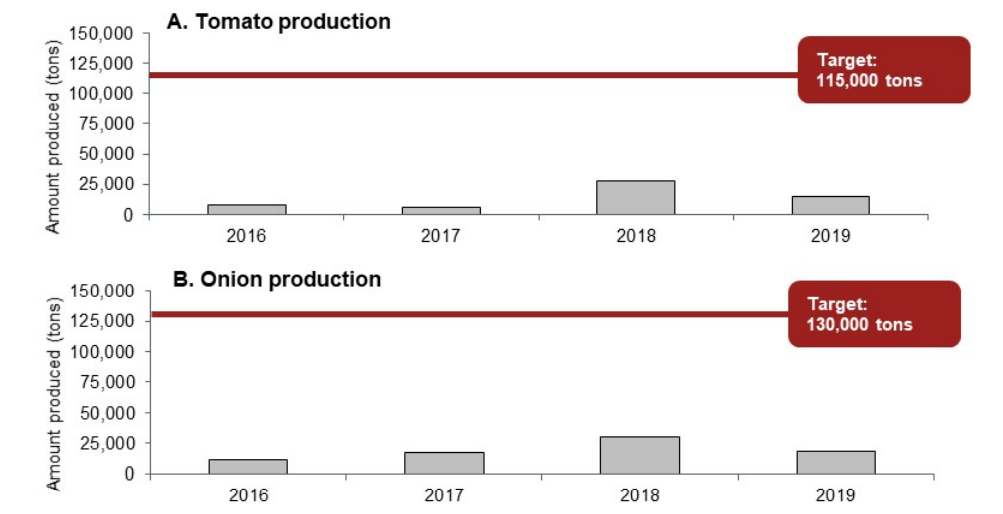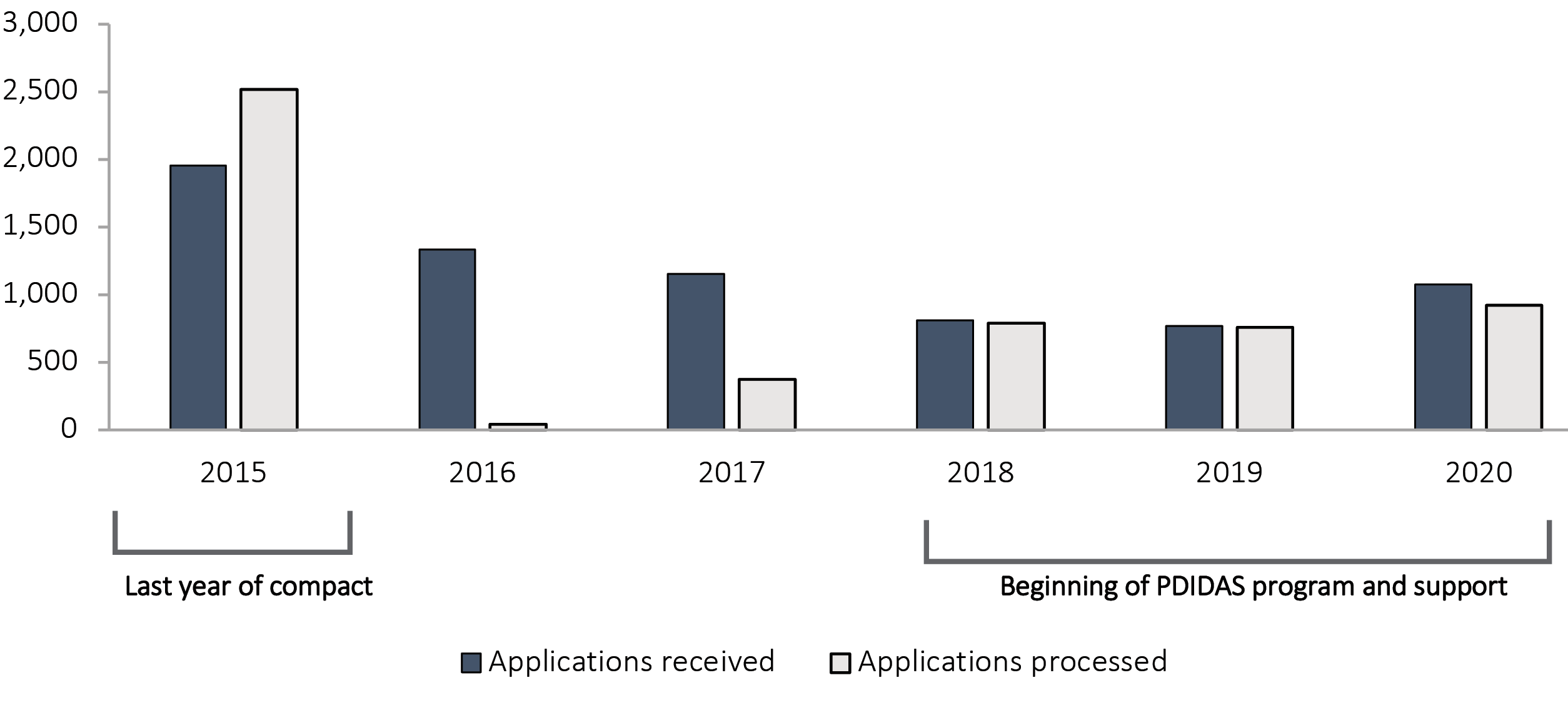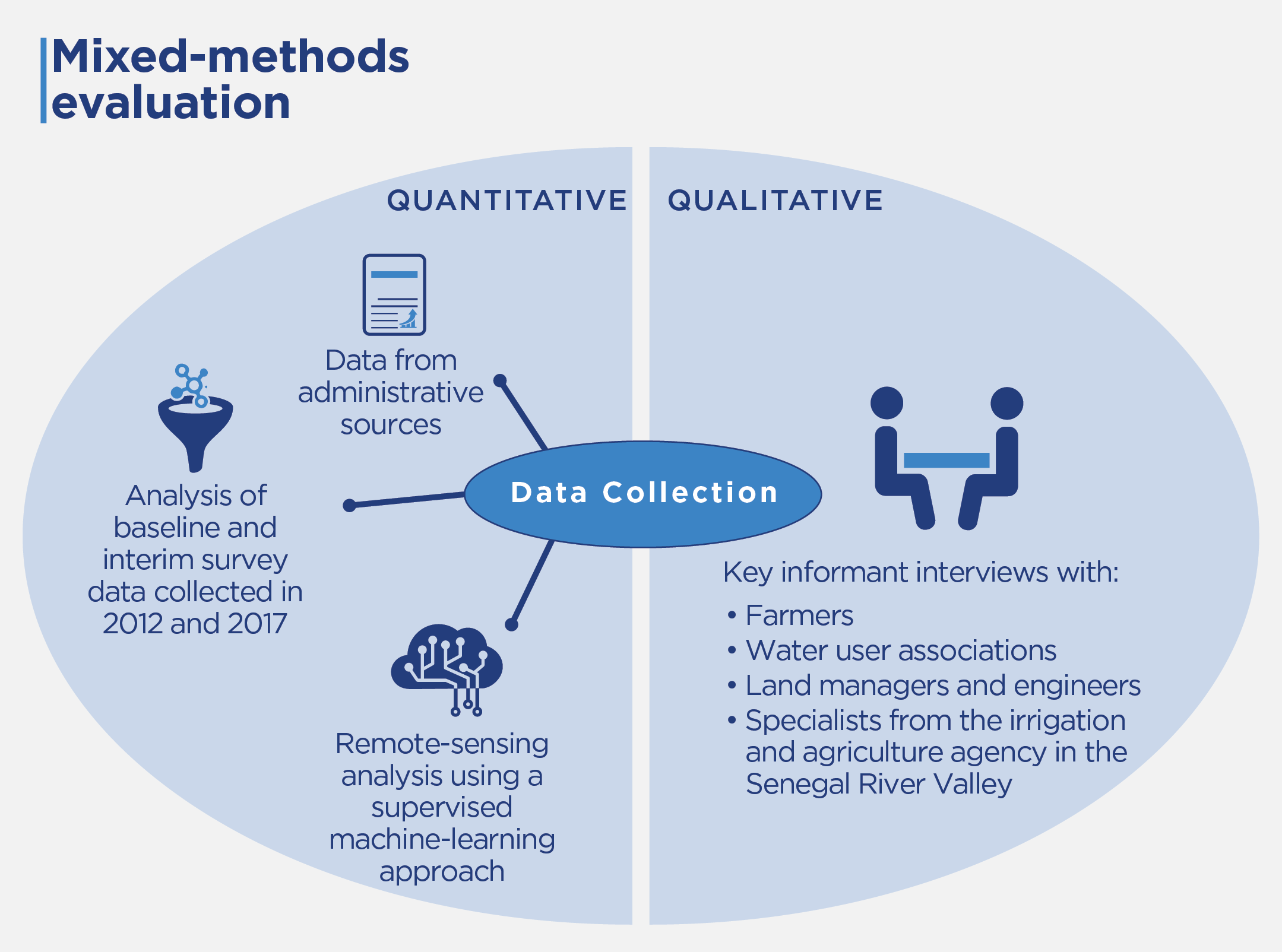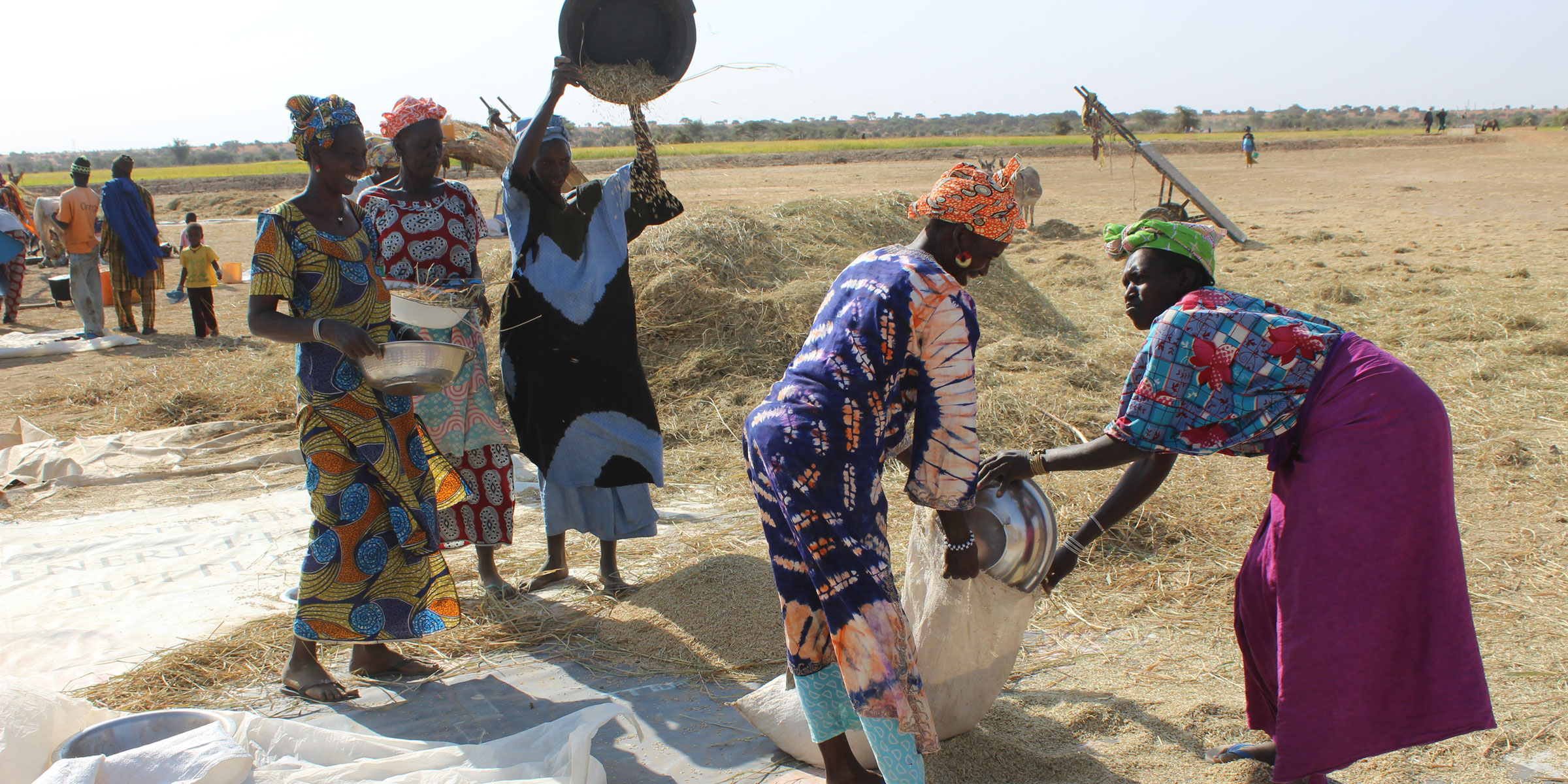Program Overview
MCC’s $540 million Senegal Compact (2010-2015) funded the $170 million Irrigation and Water Resources Management (IWRM) Project to improve the productivity of the agricultural sector in certain agricultural-dependent areas of northern Senegal. The project rehabilitated or built 266 km of irrigation and drainage infrastructure, constructed a 450-hectare perimeter, mapped irrigated land, and trained officials to better administer land. The project was based on the theory that improved irrigation and land rights increase agricultural investment, productivity and ultimately household income.
Evaluator Description
MCC commissioned Mathematica to conduct an independent final performance evaluation of the IWRM Project, focusing on a limited set of outcomes. Full report results and learning: https://data.mcc.gov/evaluations/index.php/catalog/123.
Key Findings
Maintenance
- The irrigation infrastructure that the project built and rehabilitated remains in good condition, but routine weed clearance and dredging is not keeping pace with what is needed, which may reduce water available for farming.
Land Use and Farming
- The area of land under production has steadily increased since the end of the compact, but the cropping intensity of 78% remains well below the target of 150%.
- Cultivation across multiple seasons is leading to increased production in the area, likely driven by large farmers.
Vegetable Production
- Overall, the production of tomatoes and onions increased, but it is still less than 20% of the compact targets.
- Some farmers perceive risks in adopting new crops and farming practices.
Land Tenure
- Demand for land titles continues to be strong and is met only with donor assistance.
Evaluation Questions
This final performance evaluation was designed to answer five questions on a subset of intended project outcomes to complement the findings presented in the interim report.- 1 Has the primary irrigation infrastructure been maintained since the end of the compact?
- 2 Have farmers increased their cropping intensity as expected by the project logic? Why or why not?
- 3 Are farmers growing tomatoes and onions as expected by the project logic? Why or why not?
- 4 Which stakeholders were more likely to demand a land title and change land use behaviors?
- 5 Is there continued demand for land titles, and are they being processed? Why or why not?
Detailed Findings
These findings build upon the interim evaluation report, which assessed the achievement of the project objective and intermediate outcomes within the timeframe envisioned by the compact. Focusing primarily on the Delta region, the final report explores why a subset of intended outcomes were not achieved at interim and establishes whether a subset of medium-term outcome targets were met in the three years since.Maintenance

Dredging of irrigation canals, Delta Activity area (2016 – 2020)

Map of land under cultivation for a portion of the Delta Activity area (2019)
Land Use and Farming
Land under production during the hot dry season increased from 14,512 hectares in 2016 to 20,766 hectares in 2019, indicating a steady expansion into new farming land. In the same period, land under production in the rainy season increased from 5,619 hectares to 9,225 hectares and in the cold dry season from 760 hectares to 3,302 hectares. Using the compact indicator calculation, cropping intensity was 53 percent in 2016, increased to 88 percent in 2018 and dropped back to 78 percent in 2019. This misses the target of 150 percent cropping intensity, which was set on the expectation that the extent of cultivated land would reach more than 39,000 hectares.Vegetable Production

Tomato and onion production relative to compact targets (2016 – 2019)
Land Tenure

Land applications received and processed, Gandon (2015 – 2020)
Economic Rate of Return
MCC considers a 10% economic rate of return (ERR) as the threshold to proceed with investment.| Original ERR | Closeout MCC ERR | Evaluation-Based ERR | |
|---|---|---|---|
| Delta Activity | 15.9% | 15.9% | 1.8% |
| Podor Activity | 7% | 3.5% | -7.5% |
| Year of model | 2009 | 2014 | 2021 |
MCC Learning
- Explicit institutional arrangements, tailored to the local context, should be made during implementation to ensure sufficient irrigation system maintenance post-compact.
- Large-scale irrigation projects, especially for smallholder farmers, may have difficulty meeting the ERR 10% hurdle rate. However, soft-side interventions, such as farmer trainings, and a strong focus on the market could boost farm incomes and the ERR. MCC is applying this lesson by supporting farmer services in Niger.
- Establishing and strengthening land institutions, especially those that support the administration of new types of land rights, may require more than MCC’s five-year implementation timeline. Long-term sustainability and efficient land administration may require a closer look at financial sustainability and direct coordination with other actors post-compact.
Evaluation Methods

2021-002-2565


